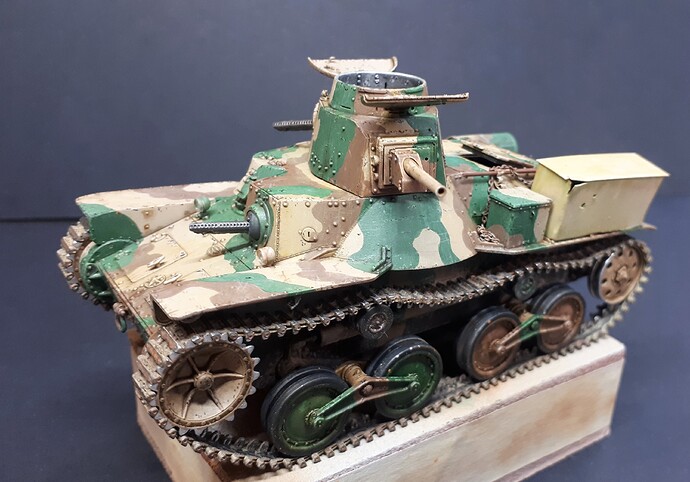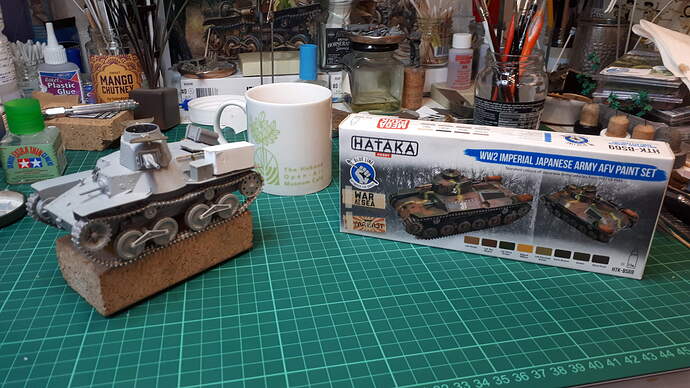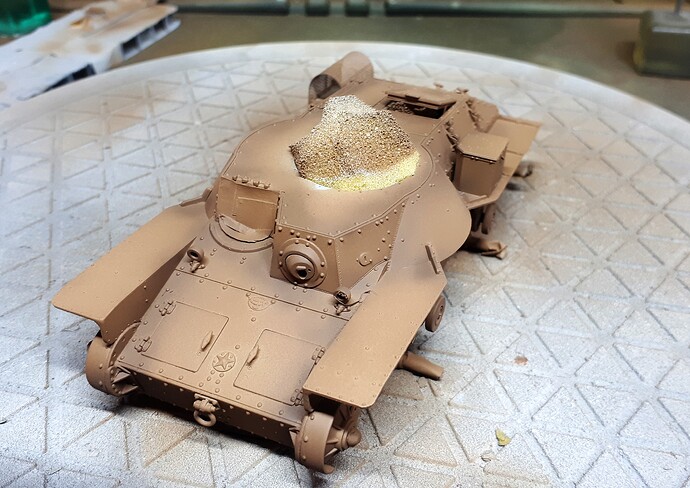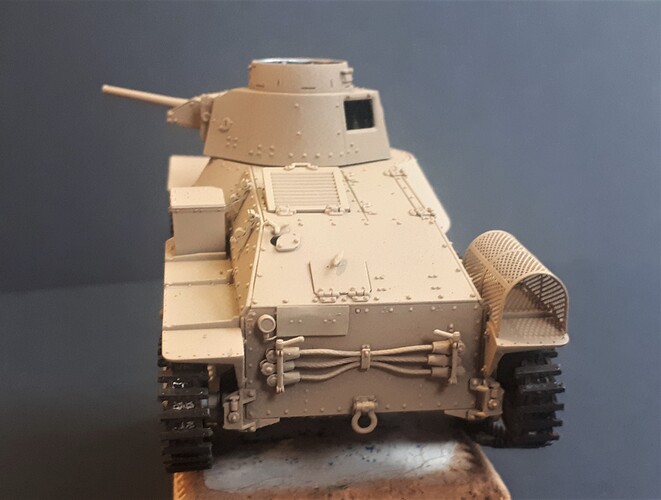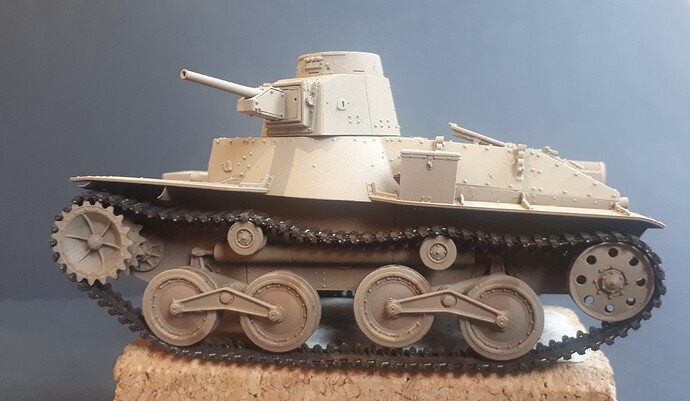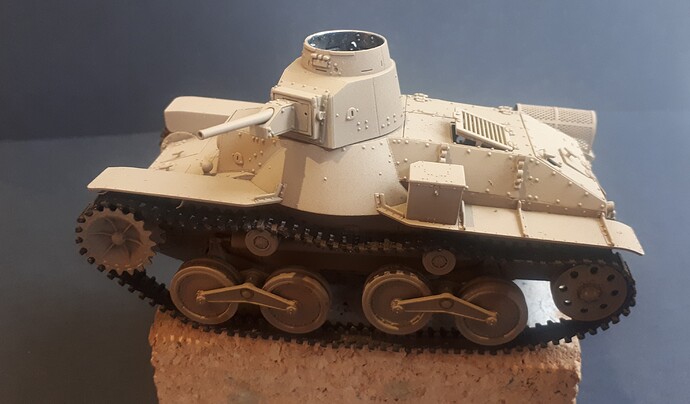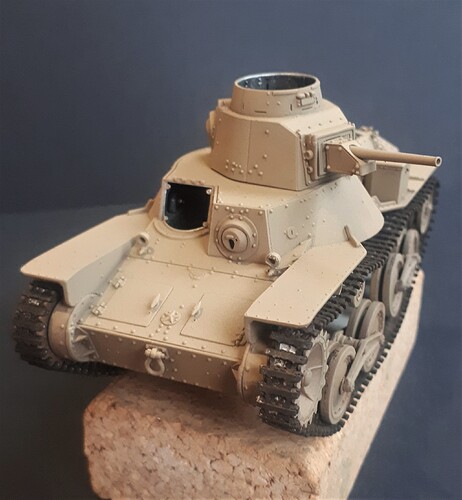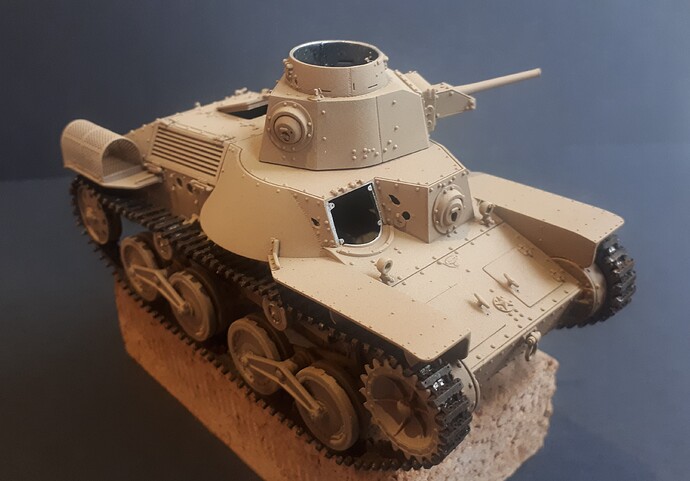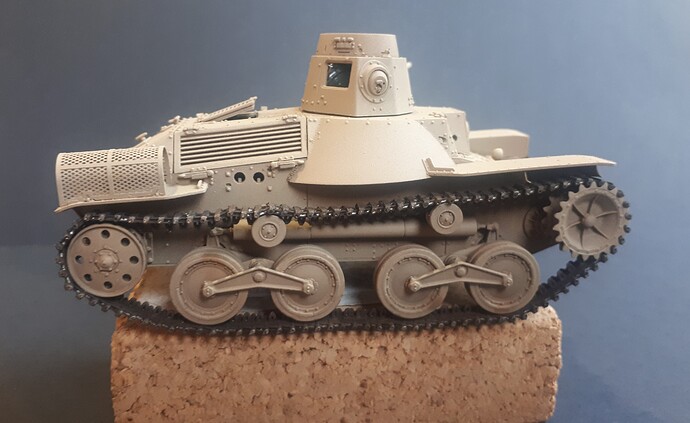So now I am going to the get on to the painting… which is a story in itself.
The world of Japanese tank colours is a rabbit-hole all of its own and I am not going to take you all down it with me on this post, but most of us are familiar with the fact that most IJM armour was painted in fairly elaborate camouflage schemes throughout the war.
In this regard they were far ahead of the German late war camo patterns, although it is worth remembering that all the major combatants of the Second World War experimented with disruptive schemes to some extent. The Japanese were, of course, preparing for fighting in sun-dappled jungle environments, although I cannot help thinking that they were also influenced by the French, who used particularly striking camouflage (it is a French word after all) on their early war tanks.
Undoubtedly the most iconic pattern is the one where the three main colours were disrupted with a fourth: yellow stripes painted in a wavy cross which subdivided the vehicle into four quarters. However, after intensive study of the photos of the Bakri Ha-Gos it became apparent that they did not have this fourth element.
Despite the fact that the images are in black and white, you can, however, clearly see that they were painted in three colours contrasting shades. These are also hard-edged, suggesting that the tanks were hand painted. From what I have read this is consistent with early war Japanese armour. The camo was also painted in a distinctive cloud pattern - almost like jigsaw pieces. You can see this very clearly on these close ups of the leading tank which is the one my model represents…
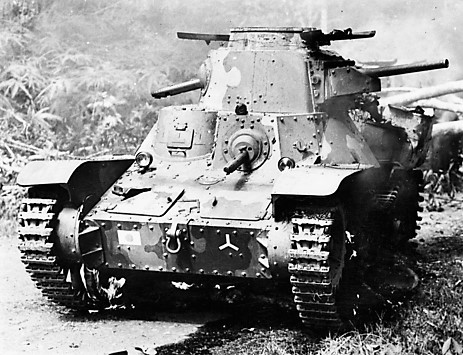
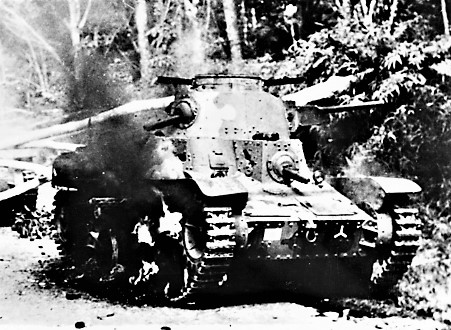
However, when I looked for colour plates on line I was surprised that I couldn’t find any that matched this scheme - or the markings (which I will come to a little later). Since the tanks from the Bakri action are probably the most photographed Japanese tanks of the entire war I must say that I find this a bit odd… so I had to ad lib.
Some time ago I bought these Hataka paints.
Something I didn’t notice at the time was that these sets come in at least two types: brush (blue) and airbrush (red) varieties (there are also lacquer sets for some colours). I had acquired the blue brush painting set. As things turned out this was probably a fortunate choice…
The Hataka paints were odd compared to my usual experience with Tamiya and Vallejo. Once I realised that I had the brush painting set I assumed that they would need a decent amount of thinning for airbrushing. But even though I used their own brand of thinner, the first mix was much too ‘wet’. They also have an odd, milky sheen when diluted - although this disappears as they dry. Worst of all, they end up with a chalky feel on the model’s surface which doesn’t adhere to the layer underneath particularly well (the odd edge or corner would rub off slightly as I handled the model even after it had been left to dry for a considerable time).
Anyway, I persevered. I began with a base coat of Khaki-Iro, which is not dissimilar the British khaki in that it is noticeably a lot more brown than green. This was then lightened with a little yellow and white for a sort of pre-shading - although it worth remembering that all colours should be lightened for true scale effect.
So here is the model after I had finished the base coat…
One fortunate aspect of the Dragon kit is that I was able to keep the complete exhaust assembly as a seperate assembly for painting - it just fits beneath the photoetch exhaust shroud once the latter has been fixed in place.
